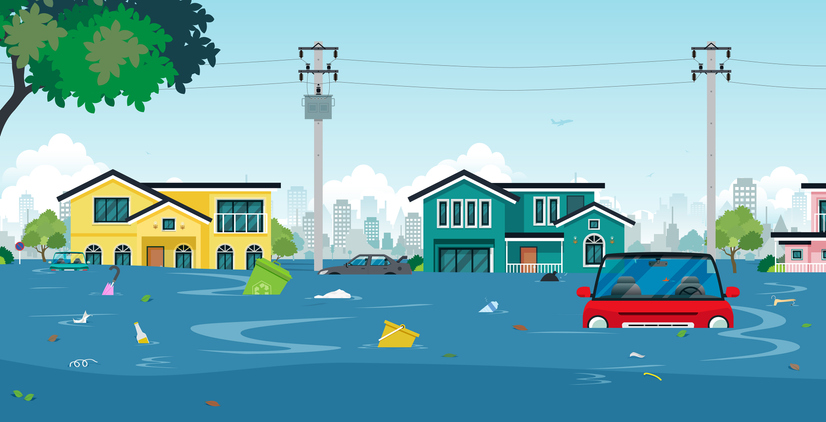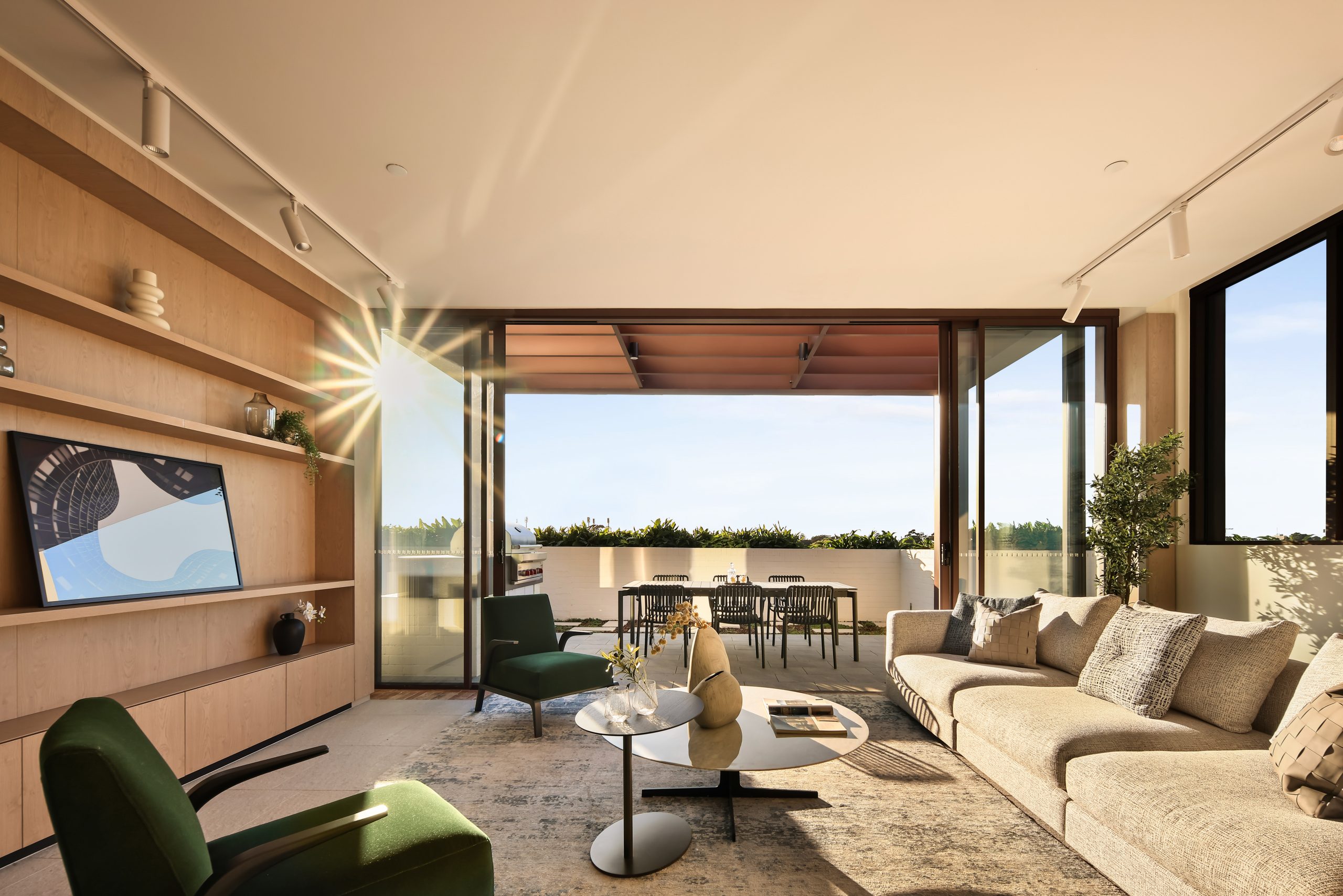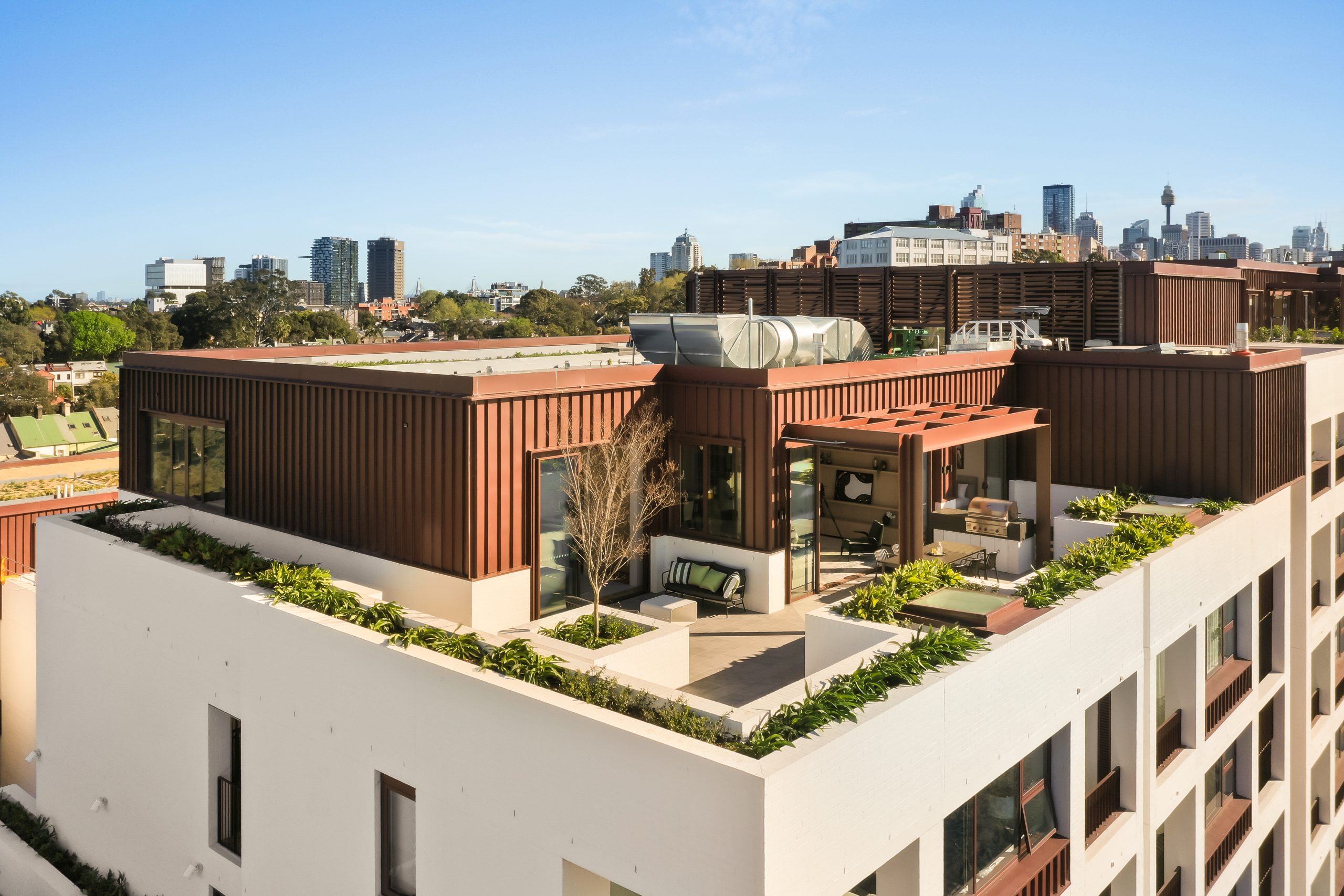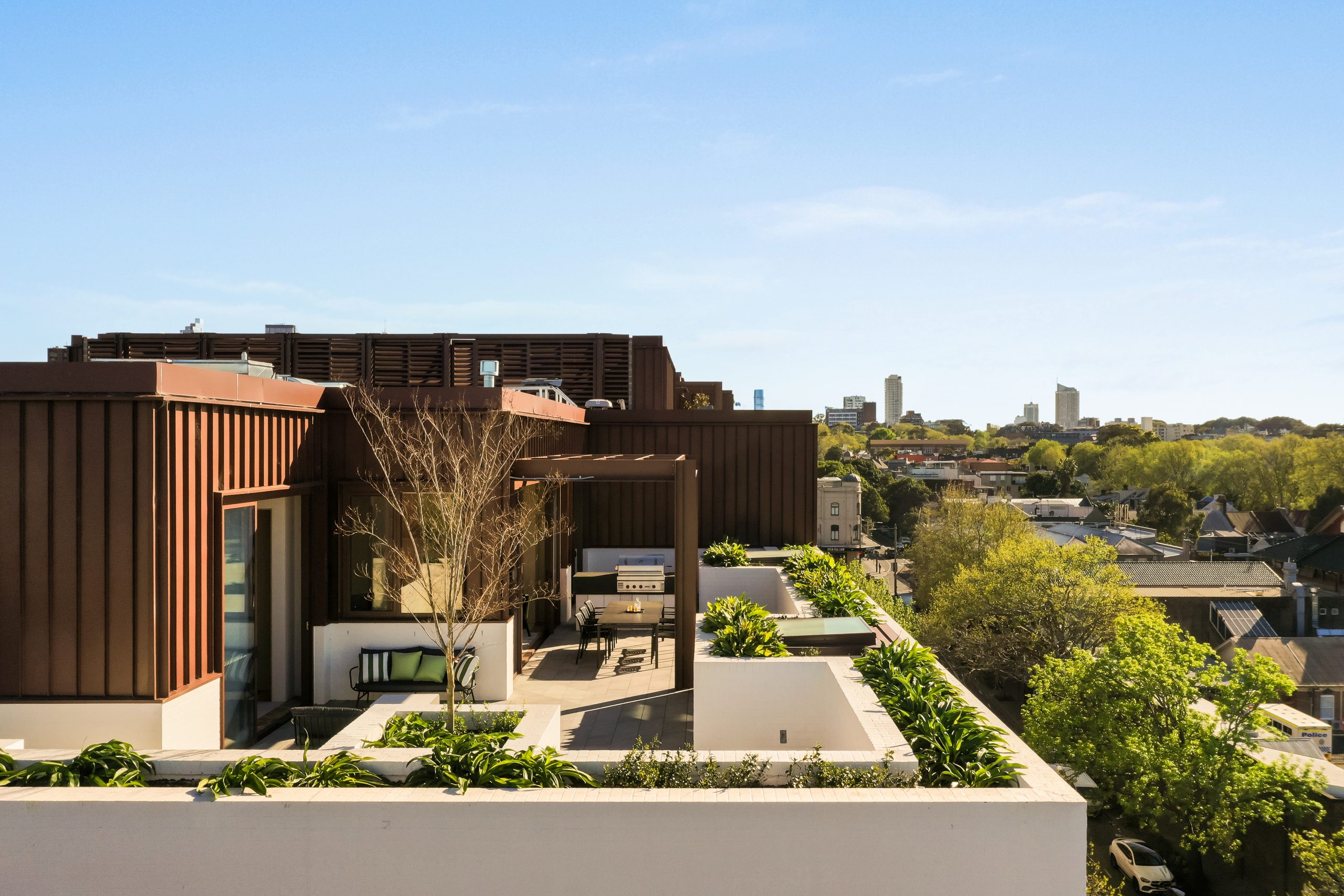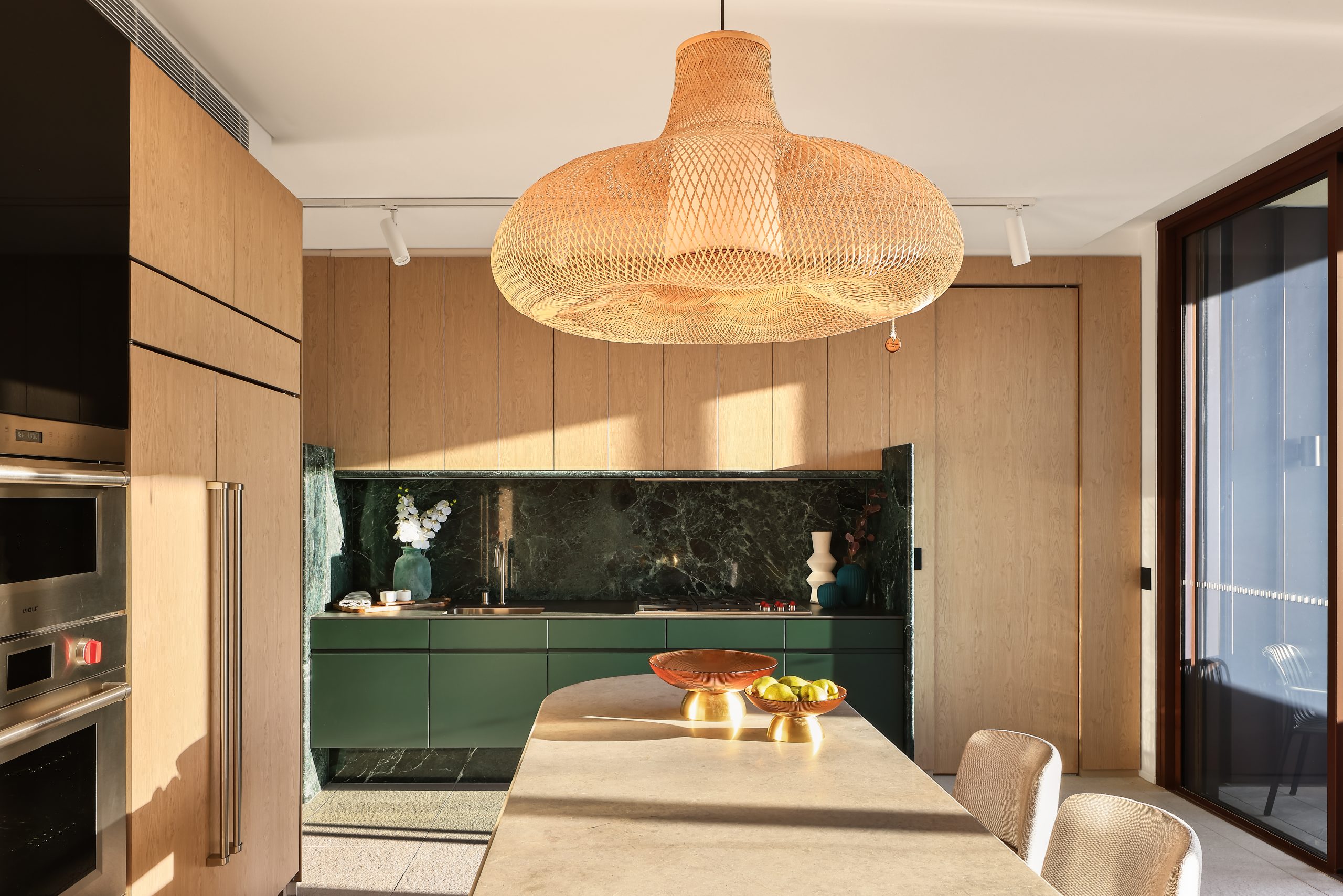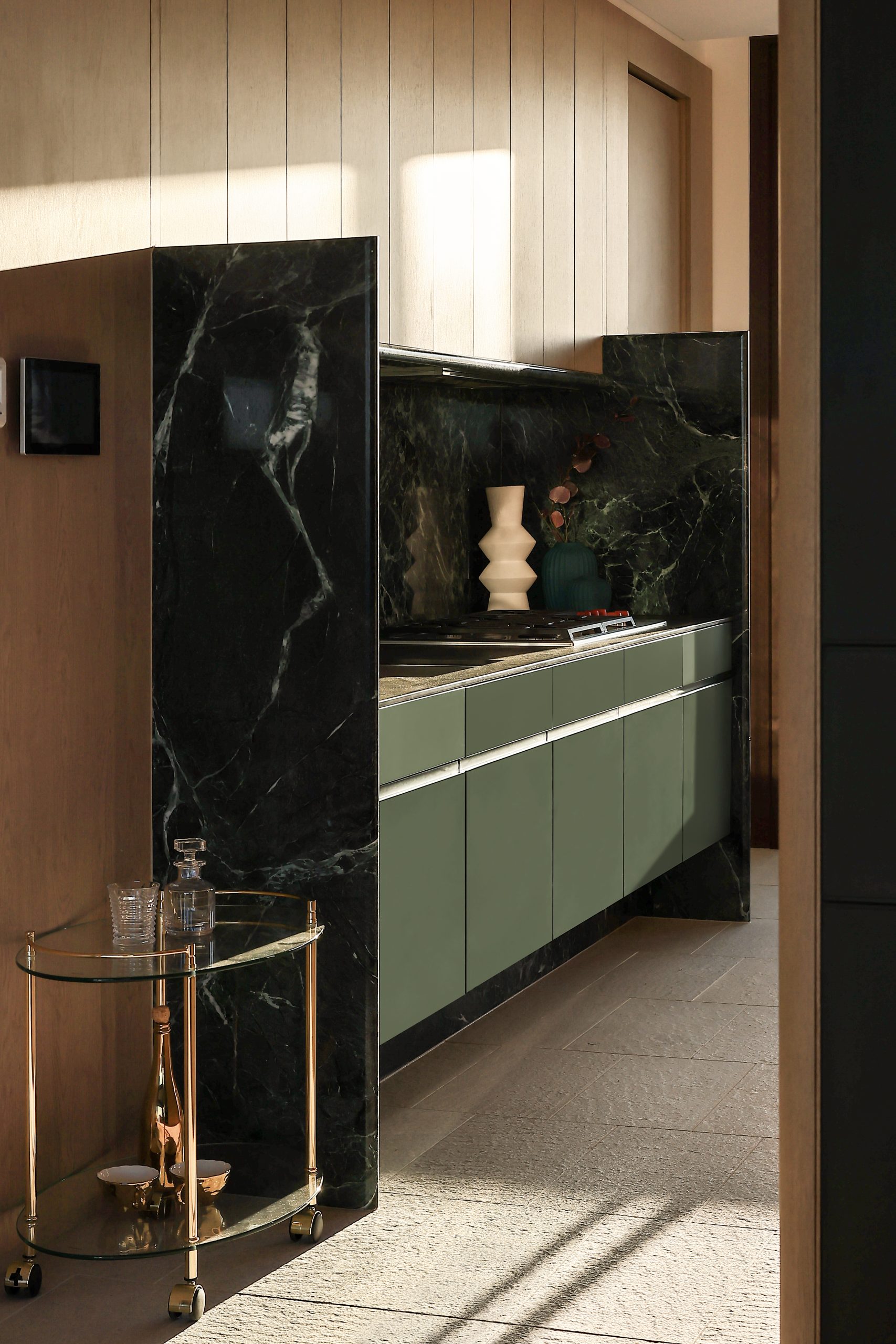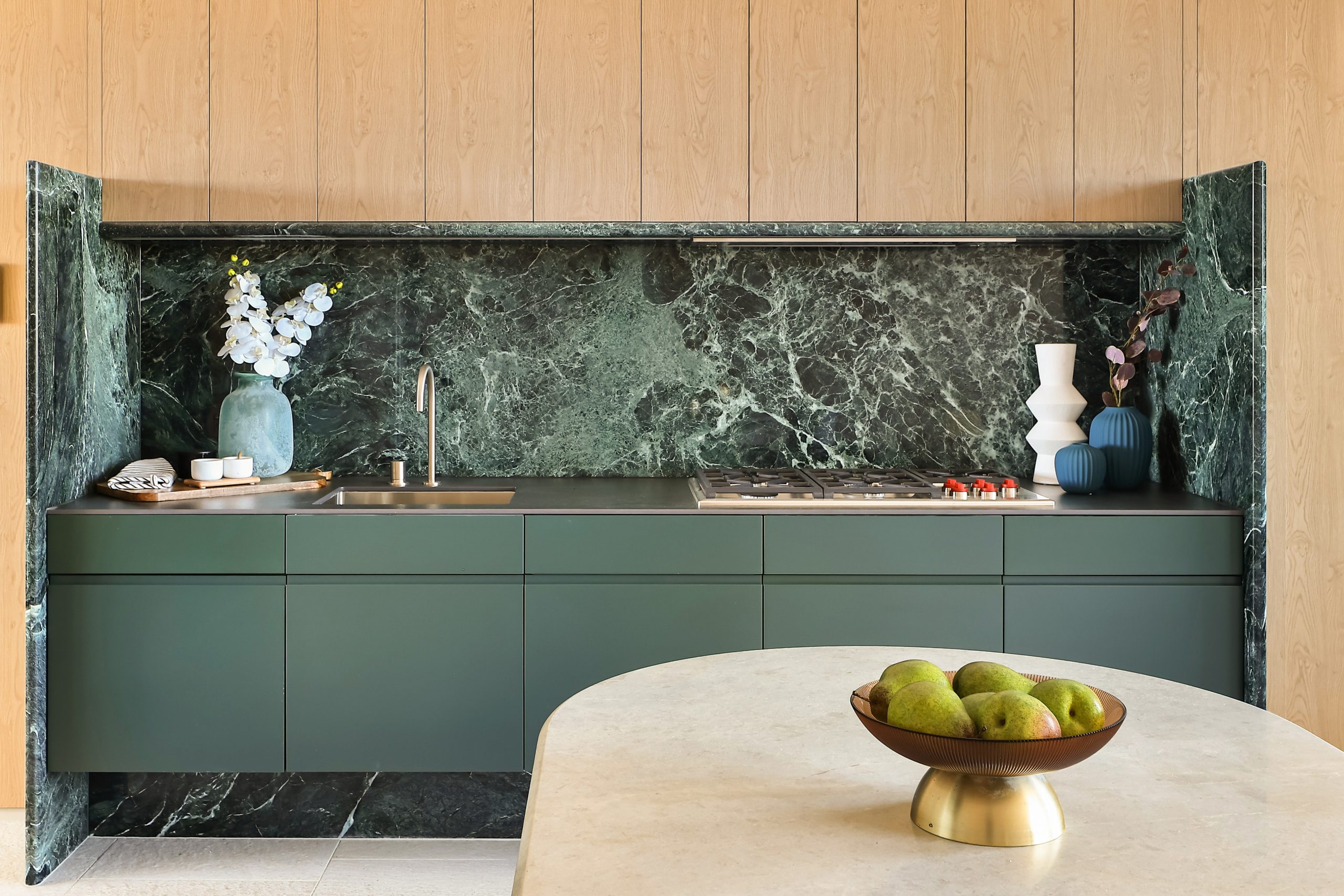Technologies To Protect Your Home Against Extreme Weather
With storms, floods and wildfires a mounting concern for many homeowners, building experts look ahead at ways to prepare.
Threats from hurricanes, wildfires and tornadoes are a growing concern for many homeowners looking for ways to protect their properties—especially as some scientists report that extreme weather events will likely continue to have far-reaching consequences in coming years.
New technologies are emerging. Companies are developing innovative roof systems such as one made by Tesla Inc. that aim to handle high winds and punishing hail. For new homes, novel uses of concrete, including a method that squeezes it out in layers like toothpaste, offer sturdy alternatives to wood-frame construction. “The Romans had concrete, but the way we’re using it by doing 3D printing is new,” says architect Rose Grant.
Homeowners contemplating some of the more cutting-edge approaches to shoring up their homes could be looking at hefty price tags—meaning they will need to weigh potential benefits against costs. And because most American homes are older than 10 years, retrofits will be key, industry experts say.
In the face of weather and climate threats in coming decades, the best advice remains avoiding coasts, floodplains or forests as home sites, says Nicholas Rajkovich, a University at Buffalo associate professor of architecture.
But for those looking to fortify their homes, here are coming options and the latest expert advice:
Roofs Go High-Tech
Solar roof systems are among the newest offerings for homeowners, billed as offering sturdy protection while also generating power. These non-traditional roofs combine sleek aesthetics and environmental sustainability with disaster resilience, building experts say.
Tesla Inc. is among the companies making a solar roof system that features strong glass tiles embedded with solar cells. Tesla says its roof, constructed with a combination of glass solar tiles, glass roofing tiles and architectural-grade steel tiles, has the top fire rating, second-highest hail rating and can withstand 110-mph winds. Costs vary by roof size, a Tesla representative says. Ivan Gould, a real estate agent in Sarasota, Fla., says the Tesla roof on his 2,400-square-foot home cost $41,500 after a tax credit.
GAF Energy, part of privately held Standard Industries, this year launched a roof system that it says directly integrates solar technology into traditional roofing processes and materials. The company says the system uses the world’s first nailable solar shingle and has the same fire and wind ratings as Tesla’s roof.
Seal the Roof Deck
As too often seen in recent disasters, severe weather can take off a roof’s shingles, allowing rain to pour through gaps in the underlying roof deck and destroy the home’s interior. An unsealed roof deck allows up to 60% of falling rain to enter the attic, the Insurance Institute for Business and Home Safety says.
Here, a tried-and-true fix can make a big difference. Sealing the roof deck is relatively easy, and can reduce water entry by as much as 95%, the insurance institute says. One method is to cover seams with flashing tape, then top the deck with a reinforced synthetic material. The roof deck of a 2,000-square-foot home could be sealed for as little as $500, the institute says.
3D-Printed Walls
Most houses are “stick built” with wood frames, yet some builders are shifting to concrete to build stronger walls. Austin-based Icon Technology Inc. says it has used 3D printing to build more than two dozen homes and other structures. A 46.5-foot-wide gantry-style printer dispenses a concrete mix, layer by layer, to form walls at a home site. The computer-driven process can save time and money, and yield a structure whose exterior won’t burn or rot and that can withstand extreme weather better than conventional wood-frame homes, says Bungane Mehlomakulu, Icon’s head of building performance. Compared with other types of construction, 3D printing can more easily create curved walls that allow high winds to flow past, he says.
Iowa-based Alquist 3D, which focuses on affordable housing, says it plans to print hundreds of homes over the next three years. Black Buffalo 3D Corp., which supplies Alquist’s material and printers, says its proprietary concrete mixture cures to a compressive strength of 7,500 pounds per square inch, well above the global wall-strength standards range of 2,500 to 4,000 PSI.
Ignition-Free Zones
Increasingly intense and destructive wildfires have focused attention on efforts needed to mitigate risks for homeowners—and is bolstering a growing idea that joint neighborhood efforts can be more effective than those of individuals. Embers and small flames cause a majority of homes to ignite during wildfires, the nonprofit National Fire Protection Association says. Many of the prescriptions remain basic: To lower risks, homeowners in fire-prone areas should clear potential fuels—anything that can burn—up to 200 feet from the house, the group says. The most critical zone is the 5-foot perimeter around the home.
Remove dead leaves from roofs and gutters. Enclose areas under decks with wire mesh to keep out debris. Move anything that might catch fire, including plants, away from exterior walls. Tree placement is also key, the association says. Branches and leaves should be at least 10 feet away from the house, and there should be more space between trees closest to the dwelling.
Protect the Entry Points
Windows are vulnerable in a wildfire, and heat from burning trees can shatter the glass before a home ignites. Double-paned windows, with one pane of tempered glass, can reduce the risk, according to Home Innovation Research Labs, an independent subsidiary of the National Association of Home Builders. Finding ways to make windows more resistant to heat and flame is a major focus of research in the homebuilding industry that is expected to bring new products in coming years.
Embers and flames that enter through a vent can ignite a house from within, so it is important to seal off potential entry points, usually found on the roof, around crawl spaces and on the undersides of eaves. Covering vents with ⅛-inch metal mesh screen can block embers big enough to start a fire, the Insurance Institute for Business and Home Safety says.
Insulate With Concrete
With roots in post-World War II Switzerland, a method known as “insulating concrete forms” is winning plaudits from safety experts for its strength and gaining a higher profile as efforts ramp up to find ways to fend off severe weather. Canada-based Nudura Inc., says structures built with its ICFs can resist winds up to 250 mph, equivalent to an F4 tornado.
Several companies make these forms, which can be stacked along exterior walls like Lego blocks. The forms consist of two layers of insulation material separated by a void several inches wide. Concrete is poured into that gap, creating a concrete-filled sandwich.
Mike Russell, a Nudura technical sales representative, says his 2,500-square-foot ICF house near St. Augustine, Fla., emerged unscathed from Hurricane Michael in 2016 and a tornado in 2017. While the house cost 5% more to build than a traditional home, he says, the insulating effects keep his electric bill around $40 to $50 a month, even in summer.
Let the Water In
In a counterintuitive idea, building experts say allowing part of your house to flood could help you protect it. Using a technique known as “wet floodproofing,” small rectangular openings can be added to foundation and garage walls, below the expected flood level. If flood waters allowed to enter a home’s enclosed area can quickly reach the same level as flood waters outside, the destructive effects of hydrostatic pressure are reduced, according to the Federal Emergency Management Agency. This can help limit damage to the foundation and other parts of the house.
“You just allow your basement to flood, so that you can clean it up later,” said Nicholas Rajkovich, a University at Buffalo associate professor of architecture. This, of course, would require putting the furnace, hot water tank and other appliances at higher levels. And, to be sure, it’s best for basements, garages and other areas not used as living space.
Beware the Garage
The garage door is typically the largest opening in a home’s building envelope, and if it breaks open during a hurricane or tornado, the rapid buildup of air pressure inside can “literally rip the roof off the house,” says John Peavey, who directs the building-science division at Home Innovation Research Labs. He recommends a reinforced garage door, which some local codes require. Impact-resistant windows and skylights will also help prevent blowouts, as do hurricane shutters.
Extra protection against wind can add 20%-30% to a garage door’s cost, according to Mischa Fisher, chief economist at Angi, formerly Angie’s List.
Reprinted by permission of The Wall Street Journal, Copyright 2021 Dow Jones & Company. Inc. All Rights Reserved Worldwide. Original date of publication: April 12, 2022.
 Copyright 2020, Dow Jones & Company, Inc. All Rights Reserved Worldwide. LEARN MORE
Copyright 2020, Dow Jones & Company, Inc. All Rights Reserved Worldwide. LEARN MORE
This stylish family home combines a classic palette and finishes with a flexible floorplan
Just 55 minutes from Sydney, make this your creative getaway located in the majestic Hawkesbury region.
A Sydney site with a questionable past is reborn as a luxe residential environment ideal for indulging in dining out
Long-term Sydney residents always had handful of not-so-glamourous nicknames for the building on the corner of Cleveland and Baptist Streets straddling Redfern and Surry Hills, but after a modern rebirth that’s all changed.
Once known as “Murder Mall” or “Methadone Mall”, the 1960s-built Surry Hills Shopping Centre was a magnet for colourful characters and questionable behaviour. Today, however, a $500 million facelift of the site — alongside a slow and steady gentrification of the two neighbouring suburbs — the prime corner property has been transformed into a luxury apartment complex Surry Hills Village by developer Toga Group.
The crowning feature of the 122-apartment project is the three-bedroom penthouse, fully completed and just released to market with a $7.5 million price guide.
Measuring 211sqm of internal space, with a 136sqm terrace complete with landscaping, the penthouse is the brand new brainchild of Surry Hills local Adam Haddow, director of architecture at award-winning firm SJB.
Victoria Judge, senior associate and co-interior design lead at SJB says Surry Hills Village sets a new residential benchmark for the southern end of Surry Hills.
“The residential offering is well-appointed, confident, luxe and bohemian. Smart enough to know what makes good living, and cool enough to hold its own amongst design-centric Surry Hills.”
Allan Vidor, managing director of Toga Group, adds that the penthouse is the quintessential jewel in the crown of Surry Hills Village.
“Bringing together a distinct design that draws on the beauty and vibrancy of Sydney; grand spaces and the finest finishes across a significant footprint, located only a stone’s throw away from the exciting cultural hub of Crown St and Surry Hills.”
Created to maximise views of the city skyline and parkland, the top floor apartment has a practical layout including a wide private lobby leading to the main living room, a sleek kitchen featuring Pietra Verde marble and a concealed butler’s pantry Sub-Zero Wolf appliances, full-height Aspen elm joinery panels hiding storage throughout, flamed Saville stone flooring, a powder room, and two car spaces with a personal EV.
All three bedrooms have large wardrobes and ensuites with bathrooms fittings such as freestanding baths, artisan penny tiles, emerald marble surfaces and brushed-nickel accents.
Additional features of the entertainer’s home include leather-bound joinery doors opening to a full wet bar with Sub-Zero wine fridge and Sub-Zero Wolf barbecue.
The Surry Hills Village precinct will open in stages until autumn next year and once complete, Wunderlich Lane will be home to a collection of 25 restaurants and bars plus wellness and boutique retail. The EVE Hotel Sydney will open later in 2024, offering guests an immersive experience in the precinct’s art, culture, and culinary offerings.
The Surry Hills Village penthouse on Baptist is now finished and ready to move into with marketing through Toga Group and inquiries to 1800 554 556.
This stylish family home combines a classic palette and finishes with a flexible floorplan
Just 55 minutes from Sydney, make this your creative getaway located in the majestic Hawkesbury region.









